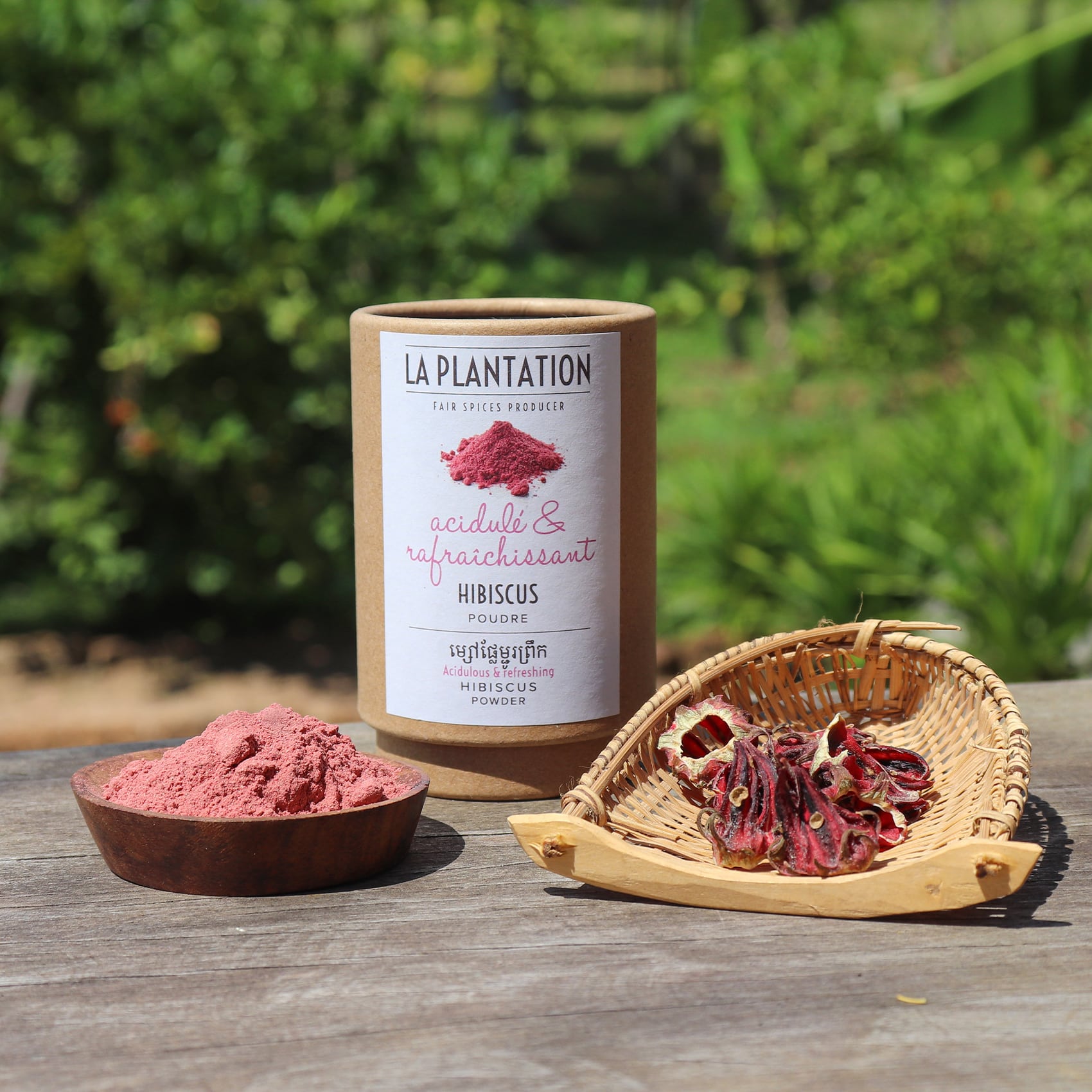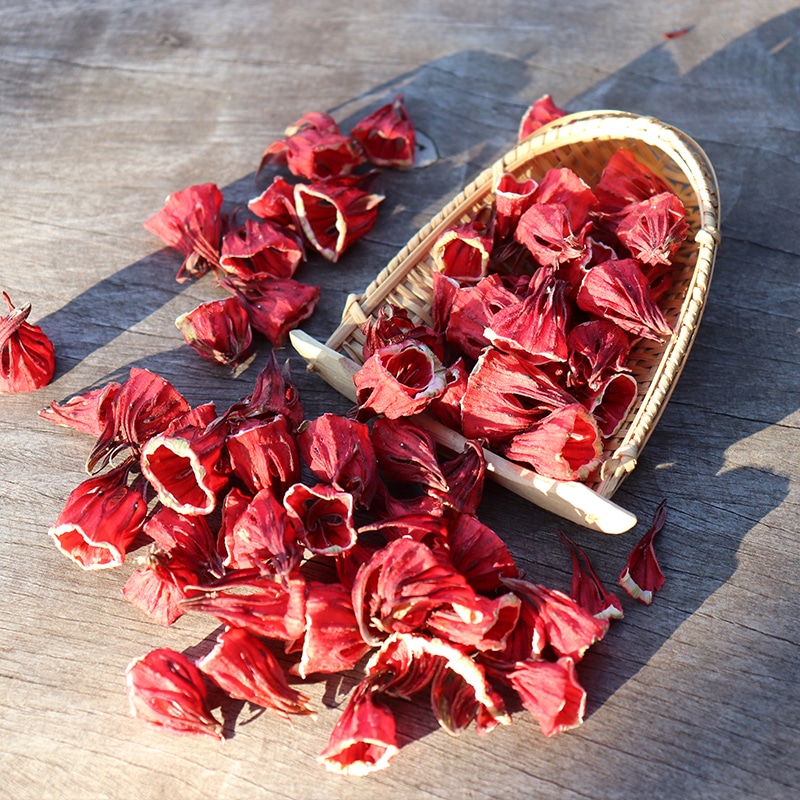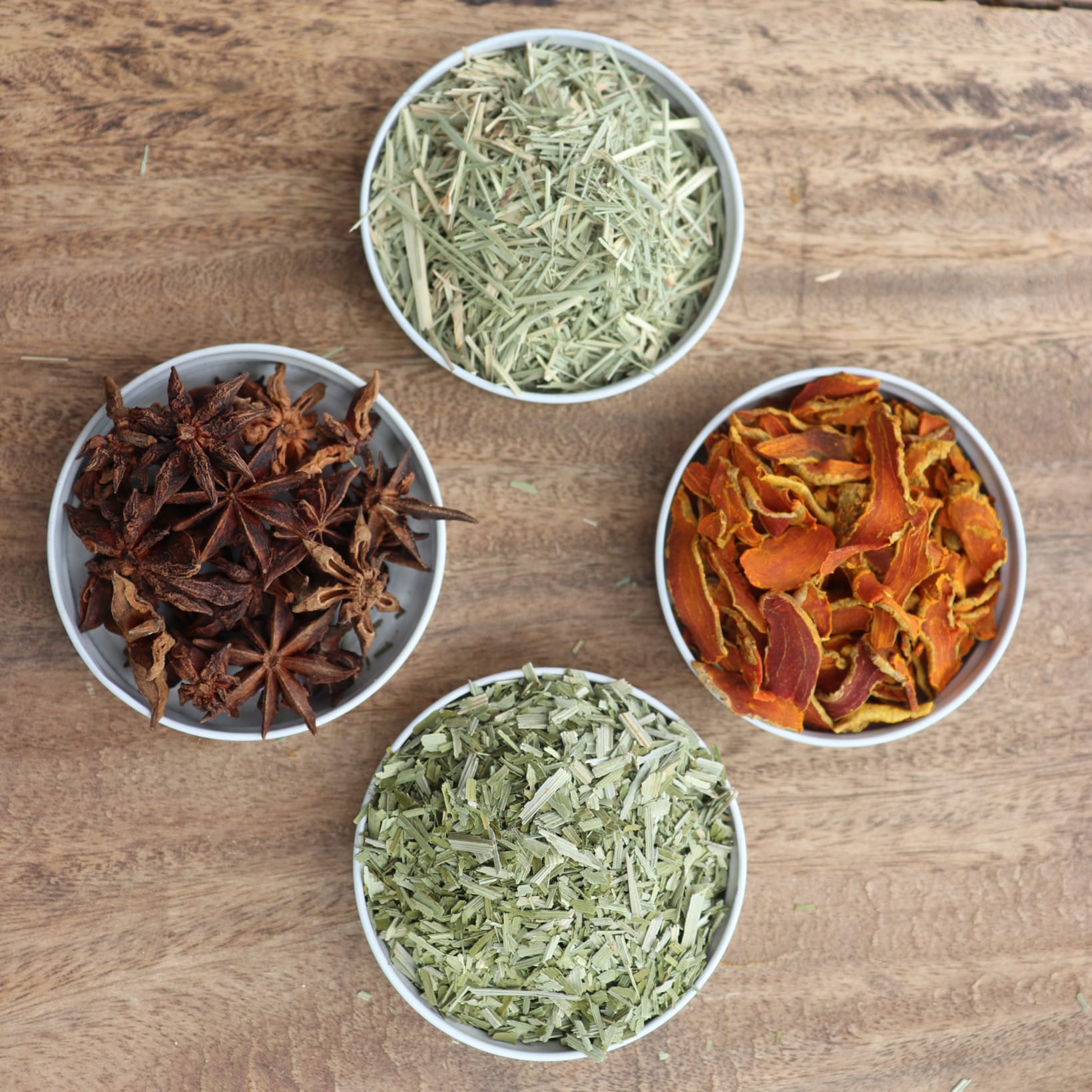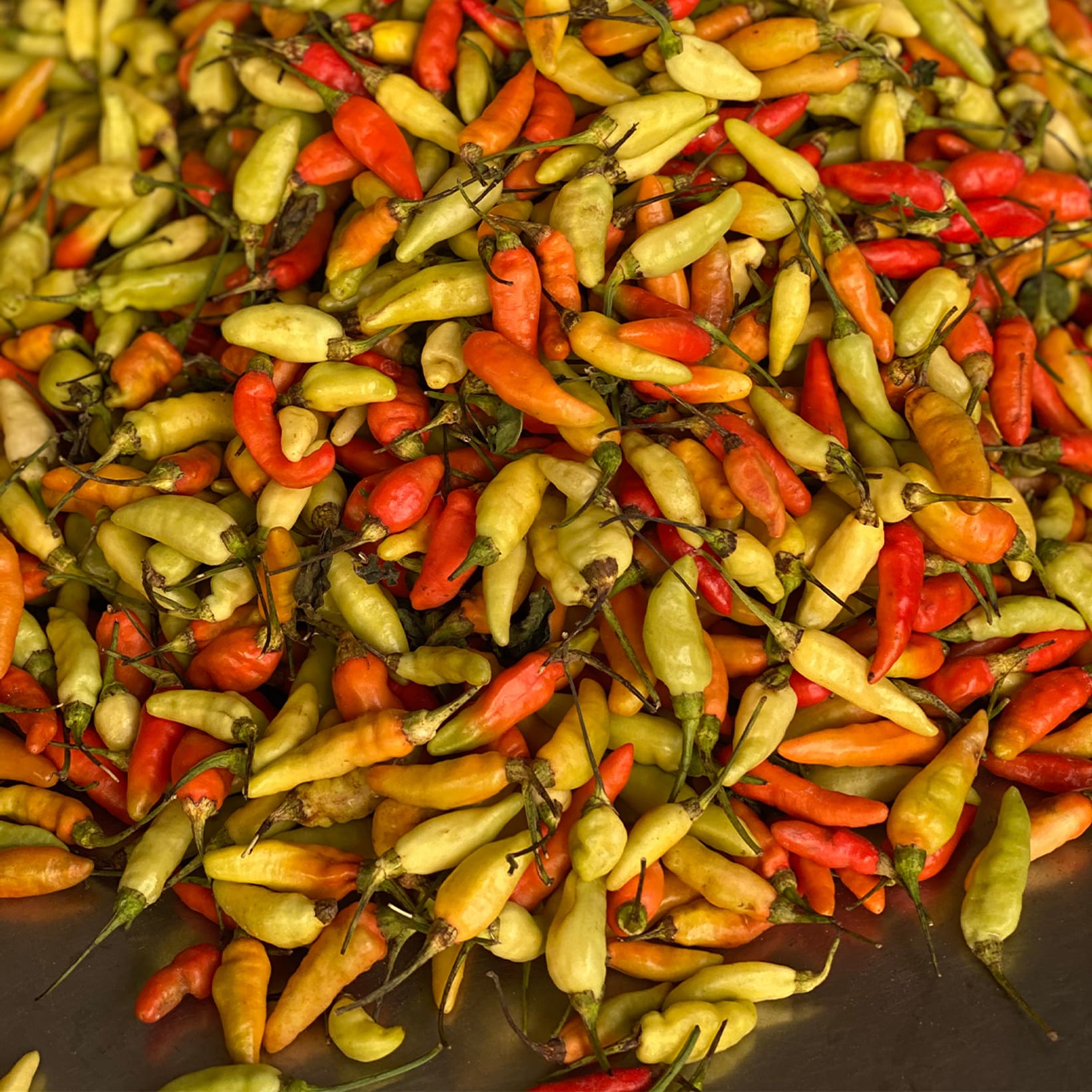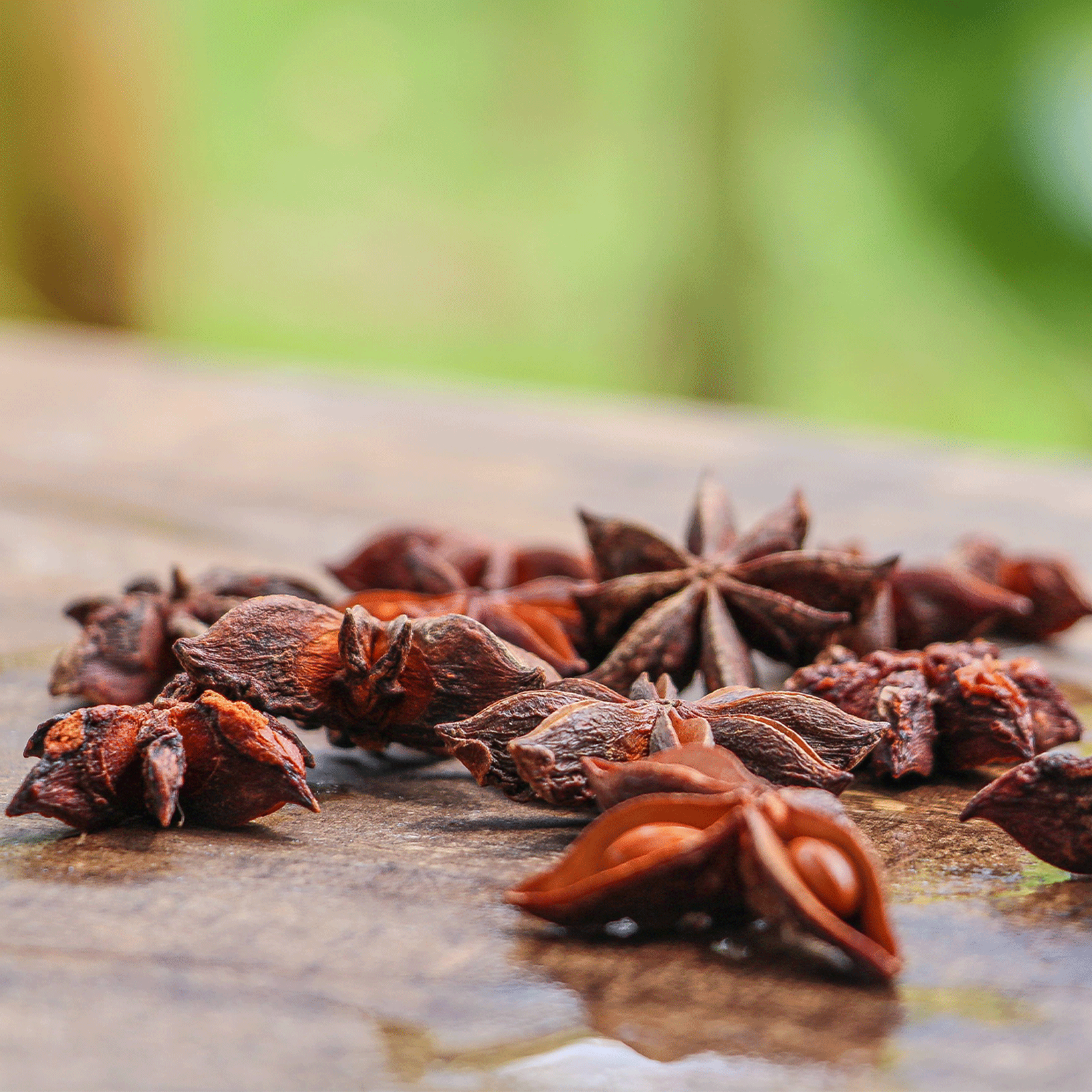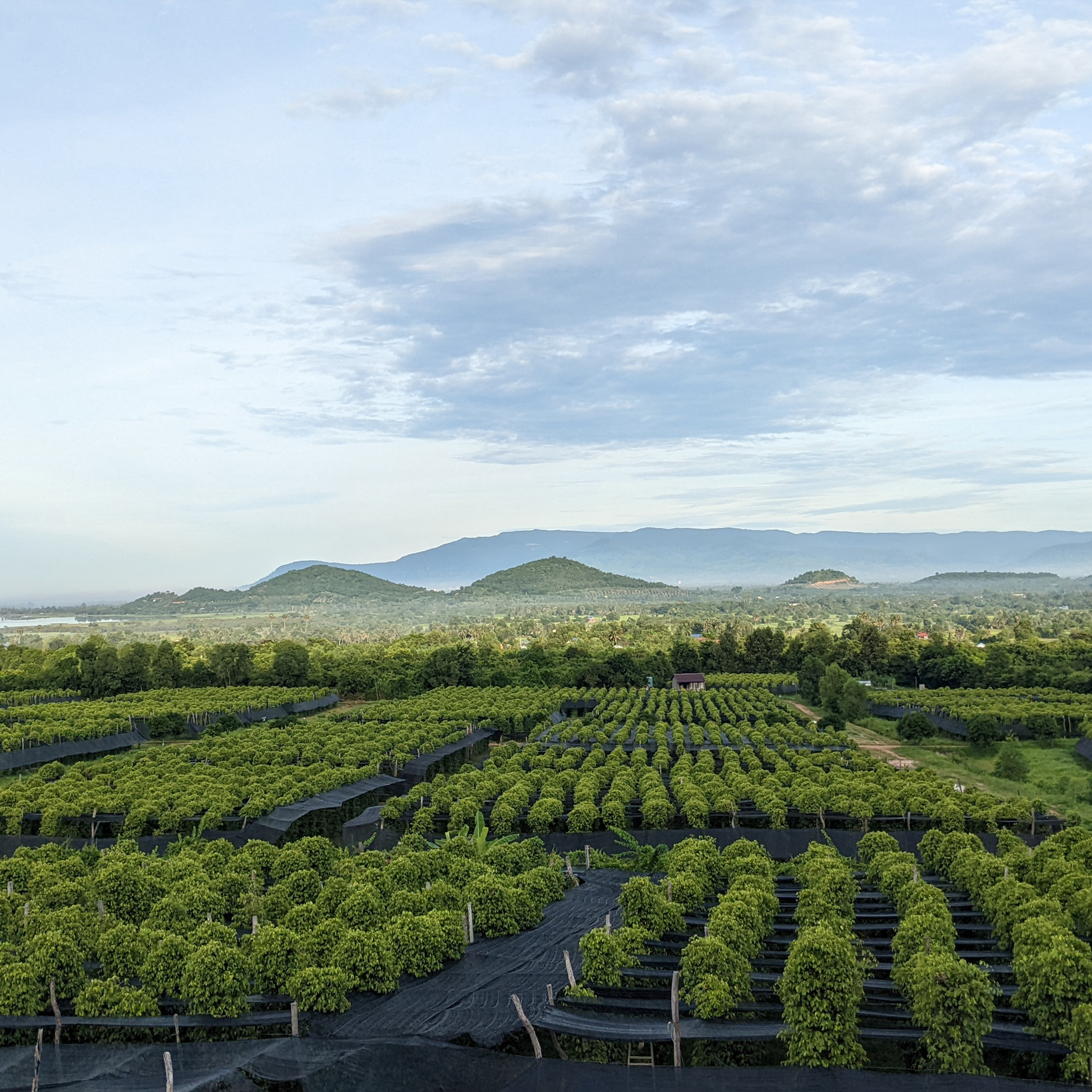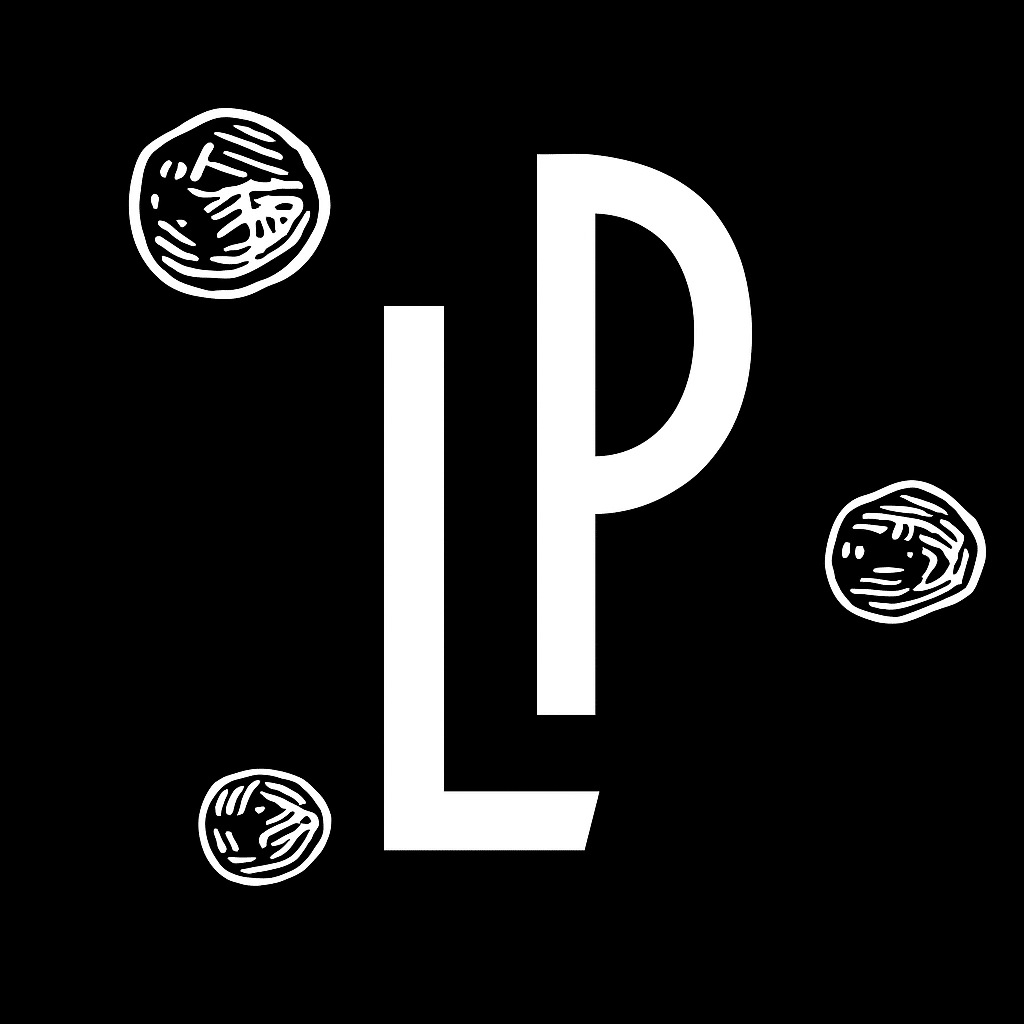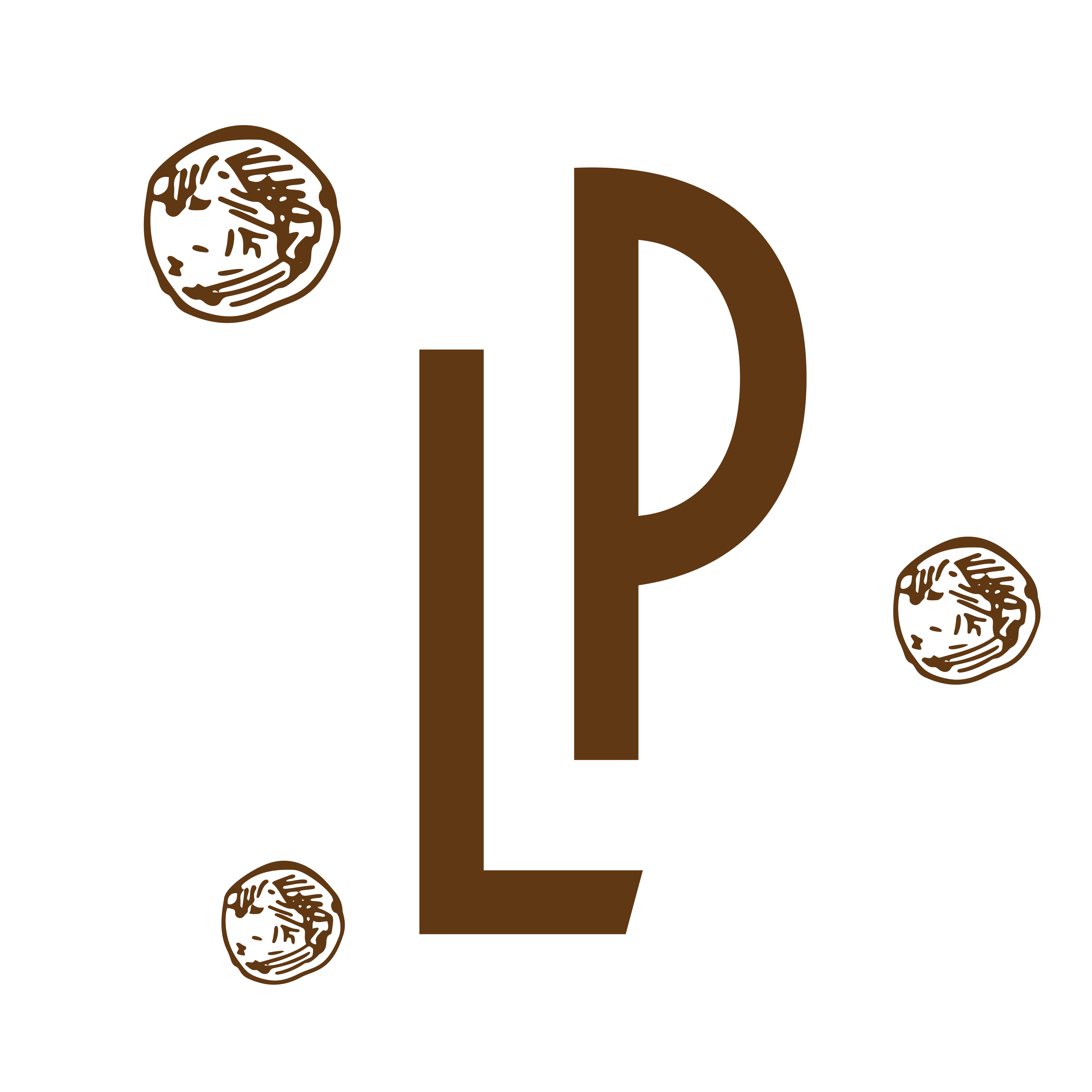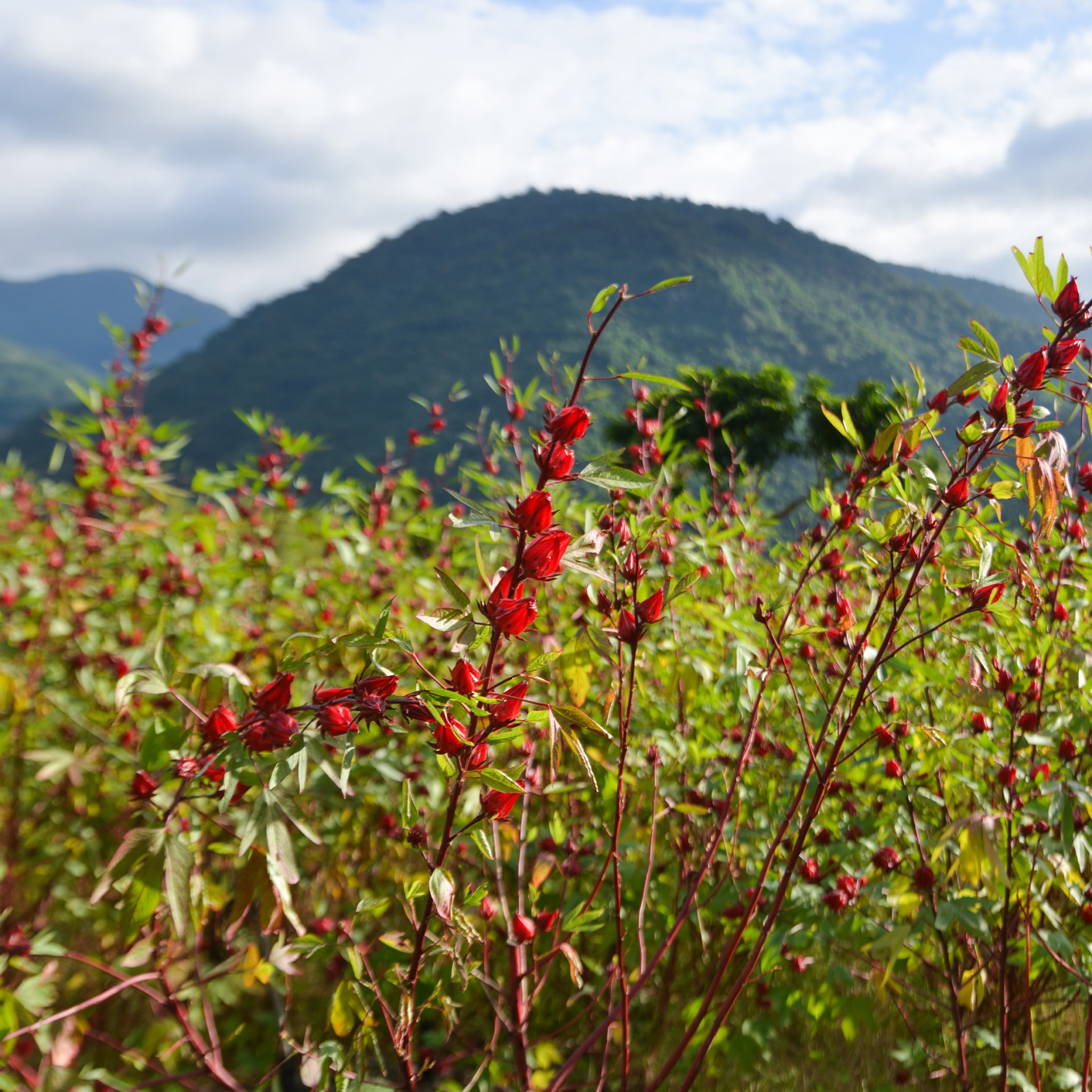
Hibiscus flowers : Spice of the moment
What is Hibiscus?
A Flower with multiple uses
Hibiscus belongs to the Malvaceae family, which includes over 200 species. Among these, Hibiscus sabdariffa, also known as Guinea sorrel, is most popular for teas and beverages. Its dried flowers have a deep red colour and a pleasantly tart flavour reminiscent of cranberries.
Hibiscus is featured prominently in various culinary and medicinal traditions worldwide:
- In West Africa, it’s enjoyed as bissap, a sweet and refreshing drink.
- In Egypt and Sudan, it’s known as karkadé, consumed both hot and cold.
- In Latin America, it’s popular as agua de Jamaica, typically sweetened and served chilled.
Difference between Hibiscus Sabdariffa and other varieties
Not all hibiscus varieties are edible. Hibiscus sabdariffa is specifically used for herbal teas and its health benefits. Other species, like Hibiscus rosa-sinensis, are ornamental only and should not be consumed.
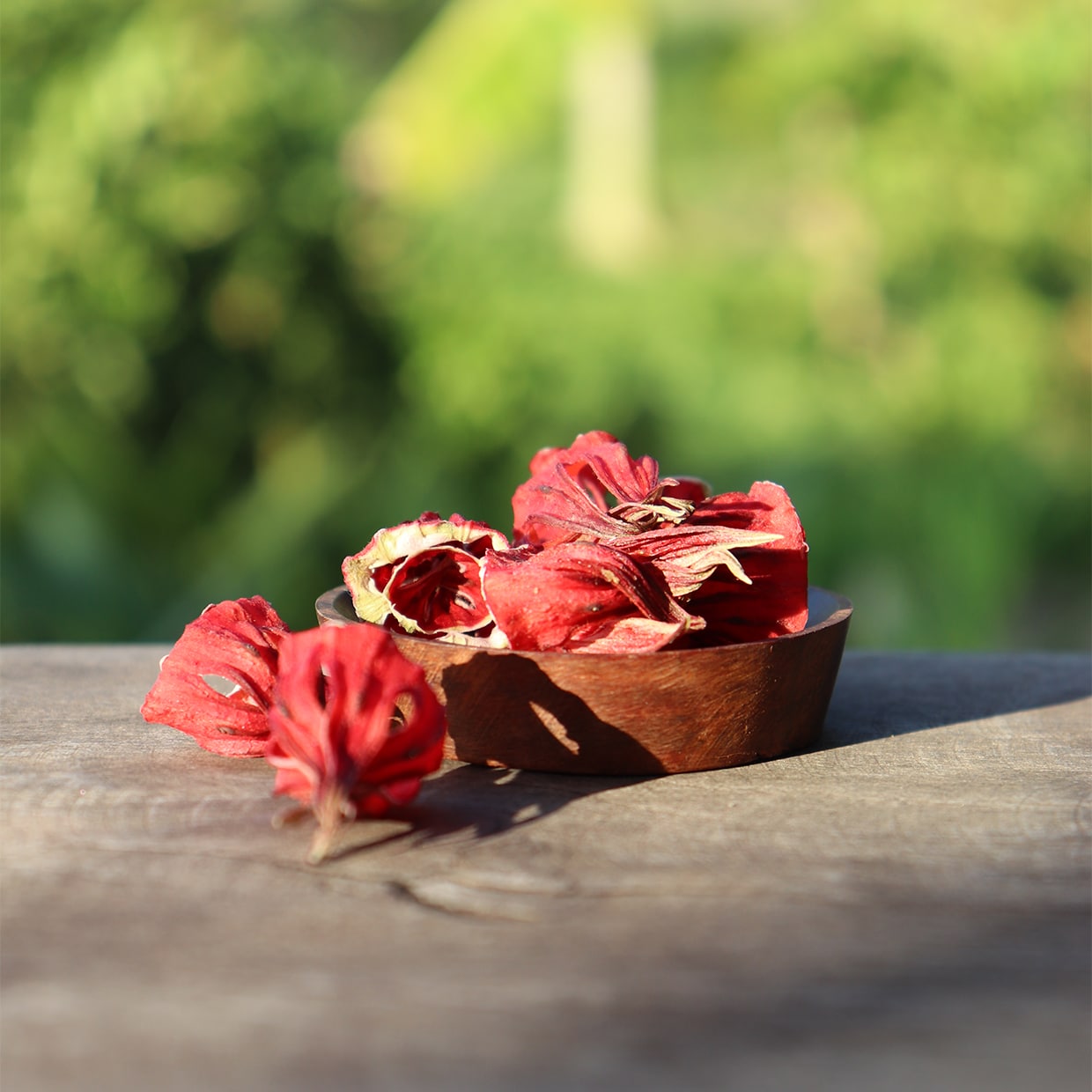
What is the Hibiscus?
Hibiscus can be enjoyed as tea, in cooking, or even in beauty treatments, offering diverse uses to suit different tastes and needs.
Hibiscus tea
Dried hibiscus flowers make a delightful tea, enjoyable both hot and cold:
- Hot hibiscus tea is perfect for colder months, providing comfort and relaxation.
- Cold hibiscus tea becomes a refreshing summer beverage, inspired by traditional recipes such as African bissap or Latin American agua de Jamaica, known for their tangy, fruity taste.
Hibiscus powder
With its vibrant purple colour and mild tartness, hibiscus powder is easy to use and ideal for culinary creativity:
It adds a floral and colourful touch to cakes, jams, sauces, and marinades.
Mixed into beverages, it enhances cocktails and smoothies, lending them an exotic flair and vitamin boost.
Two delightful recipe suggestions:
- Hibiscus powder tiramisu: A fragrant twist on the classic dessert.
- Chocolate truffles infused with hibiscus and sea salt for a perfect balance of sweetness and tartness.
Cosmetic uses of Hibiscus
In addition to culinary applications, hibiscus is prized in natural skincare and haircare:
Used as a hair mask, it strengthens hair, restores shine, and boosts vitality, thanks to its antioxidants.
For skincare, its moisturising and astringent properties brighten the skin and maintain elasticity.
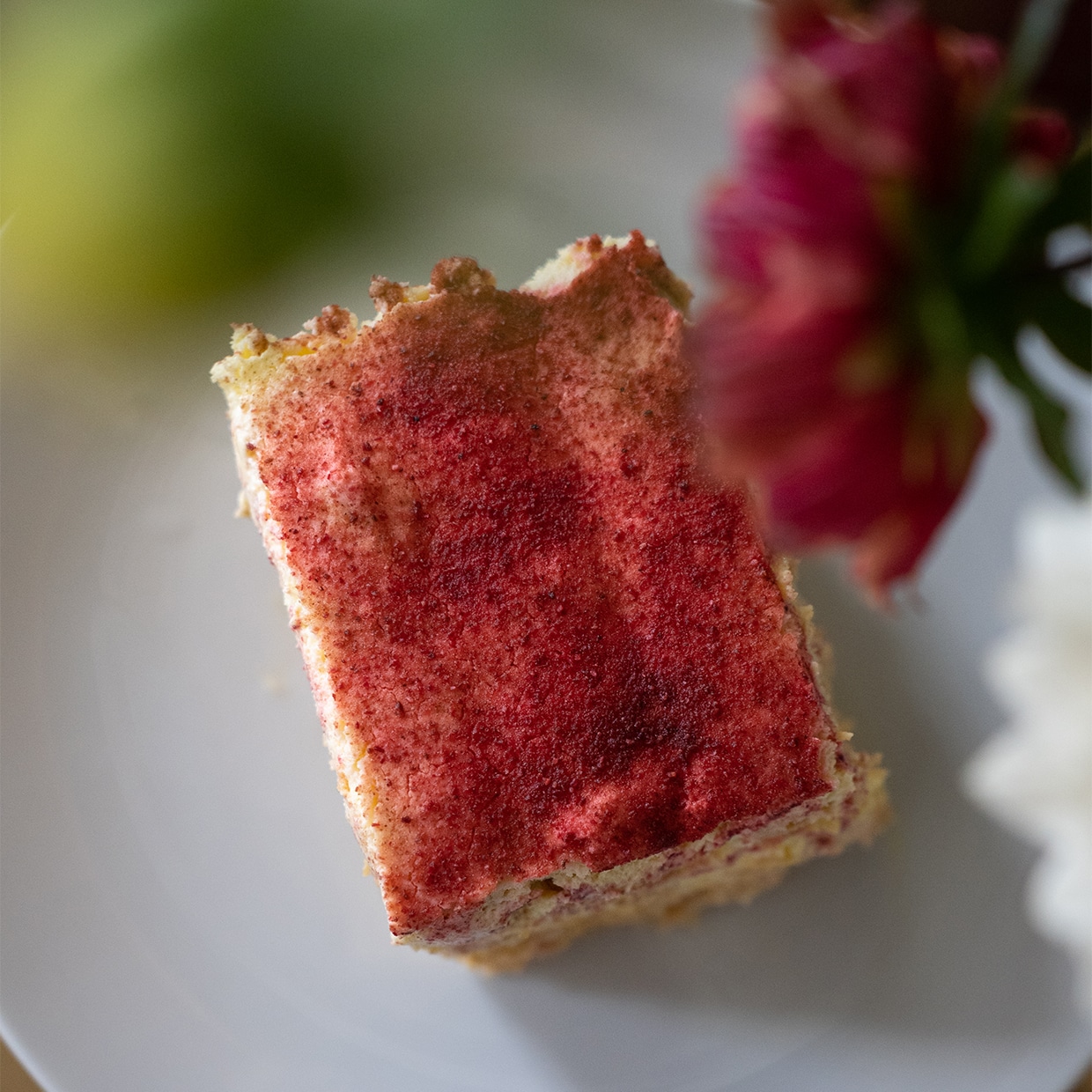
Health benefits of Hibiscus
Beyond its refreshing taste, hibiscus is celebrated for numerous health benefits:
Rich in antioxidants
Packed with polyphenols and flavonoids, hibiscus may help combat oxidative stress, potentially slowing cellular ageing.
Detoxifying and diuretic effects
Renowned for its diuretic properties, hibiscus supports toxin elimination, making it an excellent addition to natural detox routines.
Aids digestion
With its digestive properties, hibiscus tea supports liver function, promotes regular bowel movements, and alleviates bloating.
Anti-inflammatory and soothing
Its anti-inflammatory properties can soothe joint pain and inflammatory digestive conditions.
Who Should Avoid Hibiscus?
Despite its numerous benefits, hibiscus isn’t suitable for everyone:
- Pregnant women should avoid hibiscus, as it may stimulate uterine contractions.
- Those on blood-pressure medication or with chronic low blood pressure should limit consumption due to its hypotensive effects.
If you belong to one of these groups, consult your healthcare provider before consuming hibiscus.
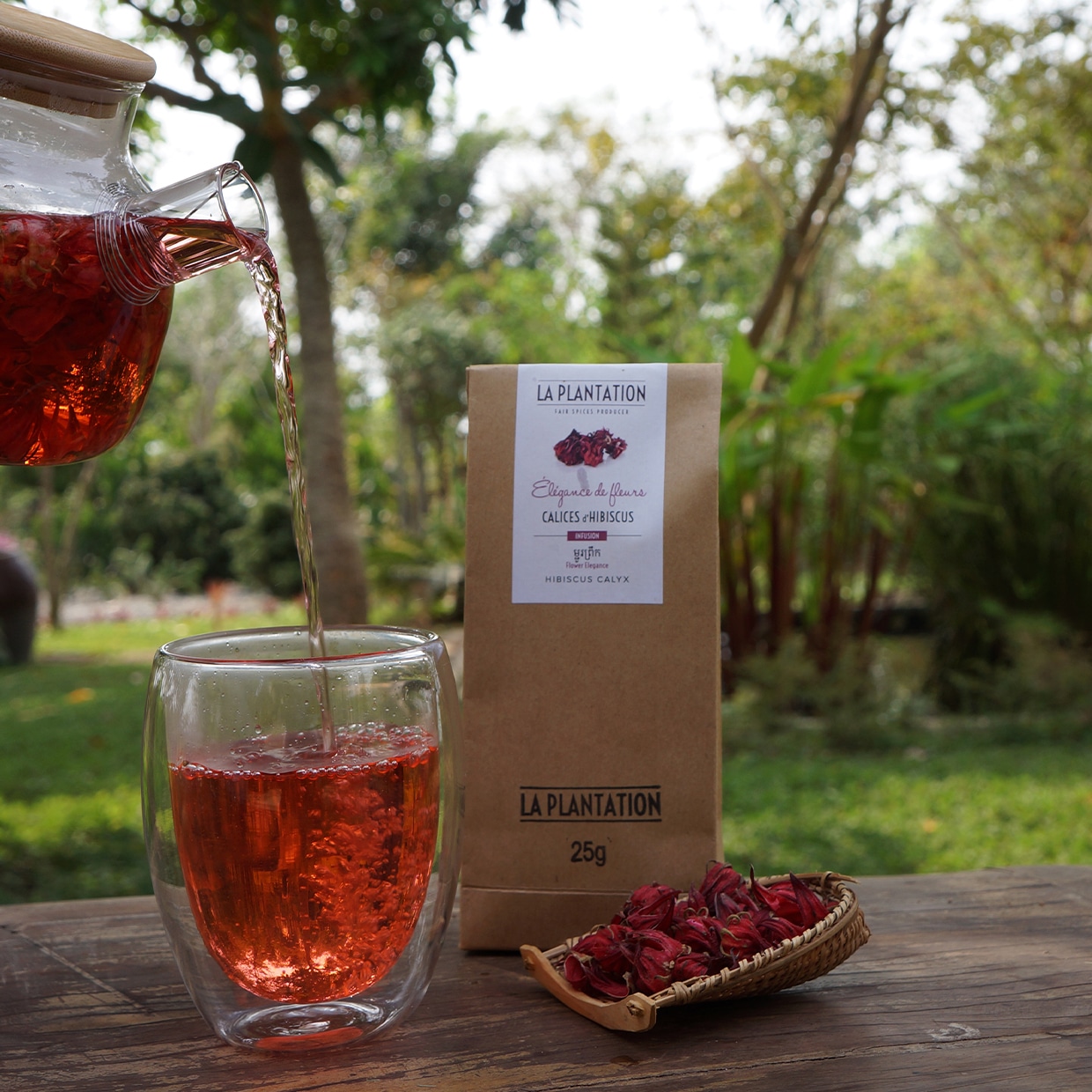
How to prepare Hibiscus tea?
Simple Hibiscus tea recipe
Enjoy hibiscus tea hot or cold, according to your preference. The West African bissap drink is a particularly popular chilled version.
Ingredients:
- 1 tablespoon dried hibiscus flowers
- 250 ml water
- Optional: honey, lemon, mint, ginger
Preparation Steps:
Heat water until it gently simmers (about 90°C).
Add hibiscus flowers and steep for 5 to 10 minutes.
Strain and serve hot, or cool down and add ice for a refreshing cold beverage.
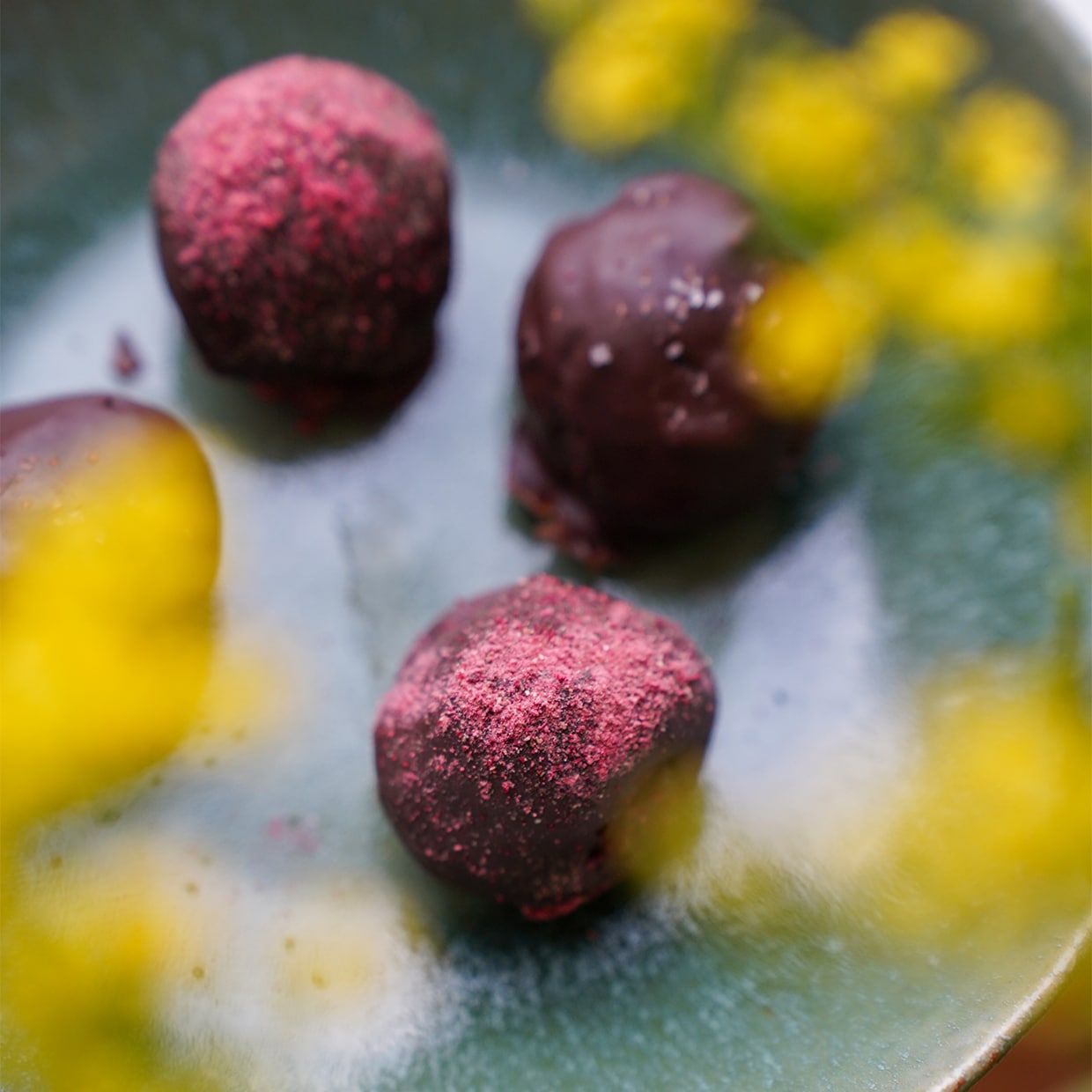
To enjoy all benefits of hibiscus, opt for ethically sourced, organic products ensuring environmental care and optimal quality.
Buying Criteria:
- Whole, deeply red hibiscus flowers indicating premium antioxidant content.
- Organically grown without pesticides.
- Naturally dried without additives.
- Transparent sourcing with clear provenance.
- Traceability from field to packaging.
Purchasing ethically produced hibiscus supports sustainable agriculture and responsible producers.
Where to Find Hibiscus:
Specialty herbal websites.
Organic and health-food stores.
La Plantation’s online shop, specialising in ethically sourced spices and herbs from Cambodia.
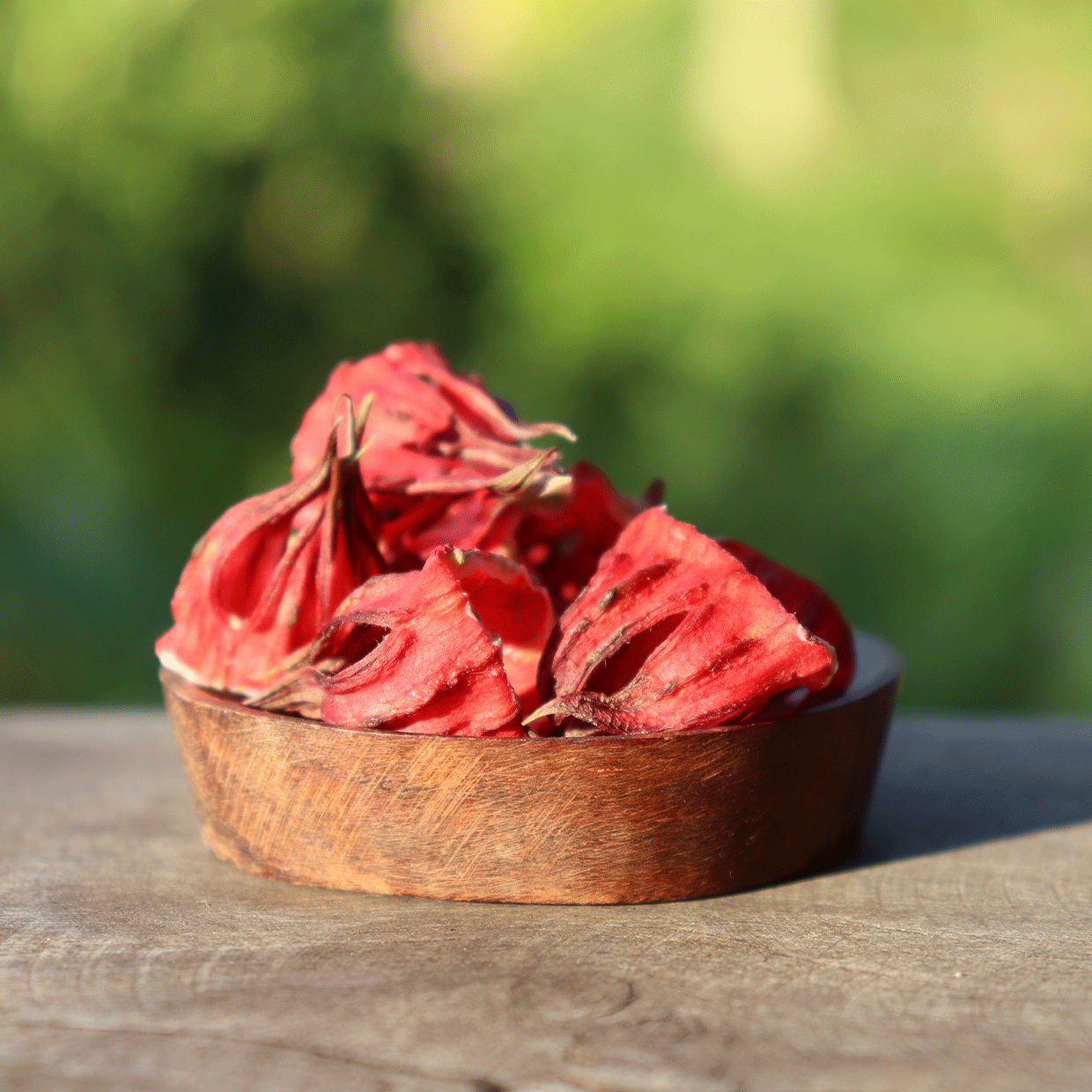
How to use Hibiscus in cooking?
What does hibiscus taste like?
Hibiscus tastes tangy, floral, and fruity—often likened to a blend of raspberry and cranberry.
Is hibiscus sweet?
No, hibiscus naturally tastes tart, but it can be sweetened, typically with honey or palm sugar.
What are hibiscus’s main benefits?
Rich in antioxidants, hibiscus can support digestion, detoxification, and has mild blood-pressure-lowering effects.
Can I drink hibiscus tea daily?
Yes, in moderation (1–2 cups per day).
Do hot and cold hibiscus teas have different effects?
No, they have similar benefits, though cold hibiscus tea is more refreshing.
Does hibiscus have any contraindications?
Yes, it is not recommended for pregnant women or those on blood-pressure medications.
Conclusion: A flower with remarkable health benefits
Hibiscus offers numerous health benefits and versatile uses, whether as herbal tea, chilled beverage, culinary ingredient, or natural cosmetic aid. If you’re looking for a refreshing, detoxifying herbal infusion, hibiscus is an excellent choice.
